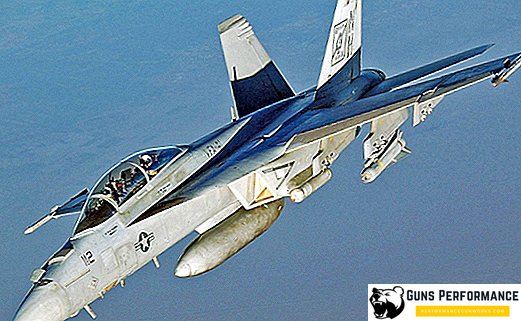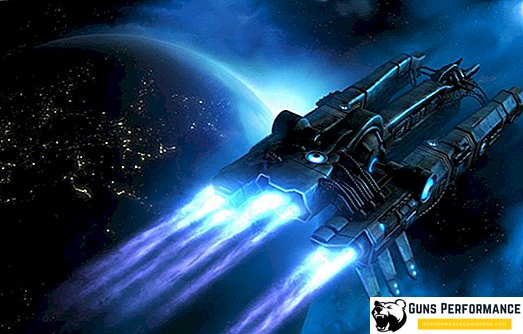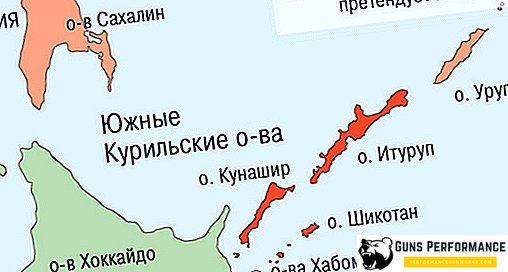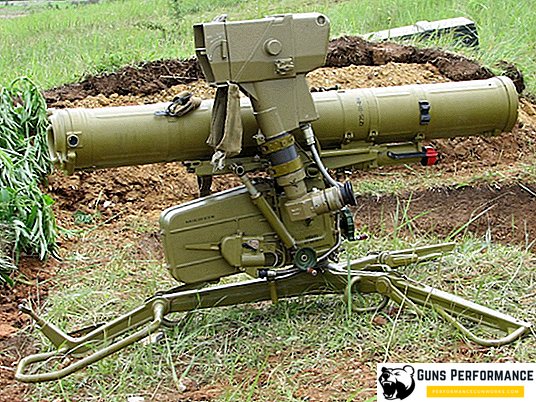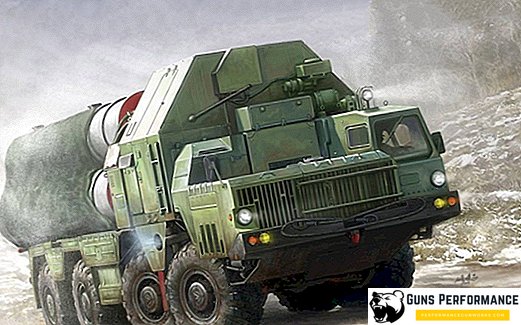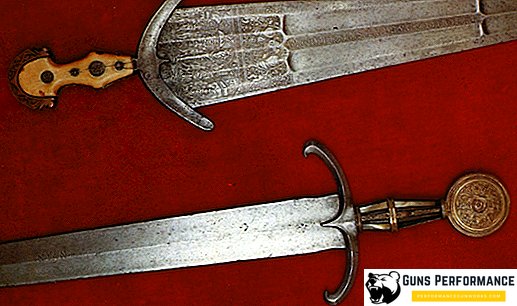The GAZ-AA car is a popular Soviet car of pre-war and wartime, which has been manufactured at the Gorky Automobile Plant since 1932. The prototype for the legendary "lorry" served as an American truck is no less the legendary company of that era - "Ford." It was the Ford AA car of 1930, which the Soviet Union bought at that time, according to the license agreement, and was a prototype.
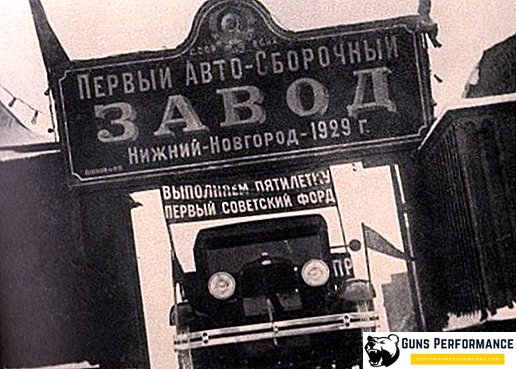
This is how the birth of the famous "half-job" GAZ-AA, which later underwent modernization several times. The design of the car was simple and reliable. In those days, the Soviet auto industry was in an embryonic state, and the relatively inexpensive purchase of a license to manufacture its own, domestic truck turned out to be as timely as possible.
Why actually Nizhny Novgorod
To Nizhny Novgorod, as the place of construction of the newest for its time, giant-scale automobile plant, the choice fell for a reason. Alternative cities then offered Moscow, Leningrad with Yaroslavl and others. Each of them had certain advantages. Nevertheless, the full complex of them all was concentrated only in Nizhny Novgorod.
He had a developed metalworking industry and skilled personnel, forest and water resources. In addition, both semi-finished and finished products were transported there relatively cheaply. Even then, Nizhny Novgorod itself already had the status of a large railway junction located at the confluence of the Oka and Volga rivers, which were two navigable rivers.

The Gorky plant itself, which then had a high technical potential, did not lag behind, and therefore decided to launch production facilities at GAZ. Interestingly, the car, manufactured under an American license, was rather soon transferred to domestic components. It is clear that it would be more elementary to develop any aggregates at your enterprise than to discharge them overseas, and then wait for more than one month to arrive. Consequently, they began to collect the "lorry" on their own and with their own materials.
The process of modernization of the GAZ-AA "Lorry"
GAZ-AA "Polutorka" reached the level of mass production in 1932, then in the assembly plant Avtozavodsk workshops immediately began to demonstrate high speed in the production of trucks. Every day, sixty cars went off the new conveyor, but there was still a potential for increasing capacity.
The Soviet version differed from the US by a number of characteristics. So the tin clutch housing was replaced with a cast, reinforced worm steering gear, and equipped with an air filter carburetor.
The design of the body had to be redone, the onboard version was made, checking domestic GAZ-AA drawings. Later, the Soviet designers had developed a unique dumping version of the "lorry", which was distinguished by the fact that the body had no need to turn it over. Loads themselves crawled under the weight of its own weight on the bottom of the body, which was specially designed. Enough just opening the tailgate.
Chassis GAZ-AA
Structurally, the rear suspension of the "half" was original and unusual. For example, its semi-elliptical springs were treated in a special way. They were placed in front of the rear axle beams in such a way that their damping would take the lever characteristics. As a result, the design of the rear suspension has become more compressed, which is reflected in its greater adaptability to relatively complete elliptical springs. However, this design had one flaw. Thus, in the process of braking by spring units, the entire load was assumed, which led to frequent failures. The loosening of the stepladders occurred, and the spring leaves began to shift relative to the longitudinal axis.

Cabin GAZ-AA from a tree
Fully equipped with Soviet details "lorry" GAZ-AA began in 1933. Cabins in the first cars were made of wood, and since 1934, the car was equipped with a metal module with a canvas roof. Rama GAZ-AA had spring suspension. Missing shock absorbers added instability and stiffness to the vehicle. At the same time the car successfully transported goods and broke infrequently. The GAZ-AA engines were unpretentious and highly repairable. The lowest-grade oil products, low-octane gasoline and even kerosene were poured into gas tanks during the hot season.
Weak spots
The weakest points in the “lorry” were the starter with the battery. The terms of their service barely reached half a year, after which the units failed, and the batteries were repaired. Most cars were wound starters.
In addition, there was one significant problem in the operation of the GAZ-AA truck, an acute shortage of tires. It even happened that the rear axles of the cars were completed with the help of not four wheels, as was established by the passport, but only two, because of which the load-carrying capacity of the car suffered.
Whatever it was, but the "half" were the most massive Soviet cars of the prewar and wartime. In addition, their chassis were used for various modifications. They were fast, various tanks, light and acoustic installations, repair mobile "volatiles", anti-chemical, hygienic and sanitary auto laboratories, radio stations and early warning radio systems, charging and lighting stations and air-launch units.

Some updates "lorry"
In 1938, the "lorry" received new engines GAZ-MM with a capacity of up to 50 liters. pp., which were previously installed on the "Molotovce-1." In addition to the upgraded engines, the "half" was equipped with improved steering mechanisms and cardan shafts with needle bearings. Chassis made spring, but there were no shock absorbers.
Since the "lorry" - this machine tech, and their release was adjusted as soon as possible, cars became indispensable in all sectors of the Soviet national economy. In those days, carrying capacity up to 1.5 tons was enough. So, during the harvest season, a lot of cars traveled to the fields, which soon took out the crop for processing, and then they returned to the fleet. "Lorry" were considered universal vehicles, being flawless and unpretentious.
Technical characteristics of GAZ-AA "Lorry"
The layout of cars: front-wheel, rear-wheel drive. Cars had:
- Length - 5335 mm;
- Height - 1870 mm;
- Width - 2030 mm;
- Ground clearance - 200 mm;
- Wheelbase - 3340 mm;
- The equipped weight is 1750 mm.
Transmission - manual, four-speed gearbox. The maximum speed "lorry" developed up to 70 km per hour.

"Lorries" - universal cars of their era
In addition to ordinary on-board trucks, the Gorky Automobile Plant produced a dump truck modification GAZ-C1. This car worked on a rather unusual principle. The loads in the bodies were initially located in such a way that their masses pressed on the rear boards, which were locked with the help of an ordinary stopper. Loaders or drivers opened the locks, and under the weight of their own masses loads, for example, building materials fell out. After which the empty body again closed on the locks.
The battle path GAZ-AA. "The road of life"
On the role of GAZ-AA - "lorry" in the Great Patriotic War of 1941-1945 was written many times and written a huge number of books. However, the most important historical route, on which the legendary car cruised, was called the "dear life", laid on the winter ice of Lake Ladoga. It was the only road connecting blockade Leningrad and the outside world.
At that time, only lightweight “lorries” could pass on the ice. Military Gaza-AA with the help of darkened headlights with caution covered the entire distance. Moreover, they were constantly subjected to fire, which led the German artillery, but still delivered to the besieged northern capital of provisions. Many cars went under the water, but still saved the city.
Since the beginning of the war, the Gorky Automobile Plant produced military trucks under a simplified version, all due to the shortage of cold-rolled metals and many other components for cars. Military "lorry" had no doors. They were replaced by installed canvas covers. The two front wings were replaced with regular roofing glands. They braked only the rear wheels, the roads were illuminated with one headlight. The side walls of the bodies were not folding.

Production completion
Only in 1944, a complete set of cars acquired the normal format. There was everything that was missing: wooden doors, brakes on the front wheels, a second headlight and folding side walls. After the war, the "lorry" was still released in large quantities until 1956, while the state needed trucks. There were these cars until 1960, until the outdated “lorry” was replaced by a GAZ-51.


